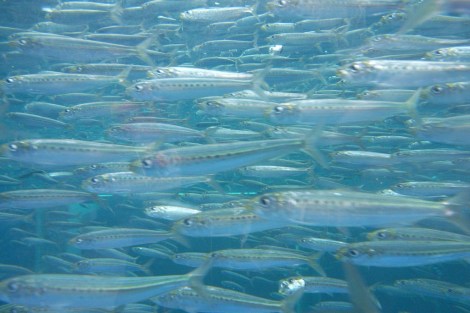More than 18 months later, the full scope of the decidedly human-made Fukushima nuclear meltdown is still rippling through the natural world. Like the butterflies before them, Fukushima fish are showing dangerously elevated radioactivity and may still for a decade to come.

Exchange PlaceHealthy Fukushima fish four years before the meltdown.
According to a paper published in the journal Science on Thursday, large and bottom-dwelling species carry most risk, which means cod, flounder, halibut, pollock, skate and sole from the waters in question could be off limits for years.
Sample fish caught in waters near the stricken reactors suggest there is still a source of caesium either on the seafloor or still being discharged into the sea, perhaps from what is left of the cooling waters. As the levels of radioactive isotopes in the fish are not declining as fast as they should have, the outlook for fishing in the area is likely to be poor for the next 10 years, the paper’s author told the Guardian.
“These fish could have to be banned for a long time. The most surprising thing for me was that the levels [of radioactivity] in the fish were not going down. There should have been much lower numbers,” said Ken Buesseler, senior scientist at the Woods Hole Oceanographic Institution in the US, who wrote the paper titled Fishing For Answers Off Fukushima.
On their own, Buesseler insists that these fish “are measurable and consistent” but “not lethal” (unless ingested in large quantities over a long period of time). But neither are they legal. In April, the Japanese government tightened regulations on radioactivity in the seafood market to quell the public’s concerns. This new report might do anything but, especially as only more radioactive water stands to enter the underground water system, oceans, and public water supplies.
Meanwhile, stateside pacific albacore are also showing signs of Fukushima radioactivity, according to a new study out from Oregon State University, following up on May’s discovery of other radioactive tuna.
Relying on agency statements, fisheries organizations such as the Oregon Albacore Commission predicted that 2-to-5-year-old albacore, a mainstay of the U.S. troll and pole fishery, would be unaffected because their migration patterns do not take them through the waters where the radiation leak occurred.
But scientists differ on the details of albacore migration and behavior. Some suggest that not all albacore follow the same migration routes between western Pacific waters and feeding grounds off the U.S. West Coast. Some believe North Pacific albacore may even comprise two separate sub-stocks with different migratory paths.
The study’s findings stand to mean more for albacore science than fish-eating Americans, who would have to increase their consumption to 4,000 pounds annually to make any measurable difference in their own radioactivity. So there’s a goal for all y’all truly adventurous animal eaters with a hunger for imported cesium.



